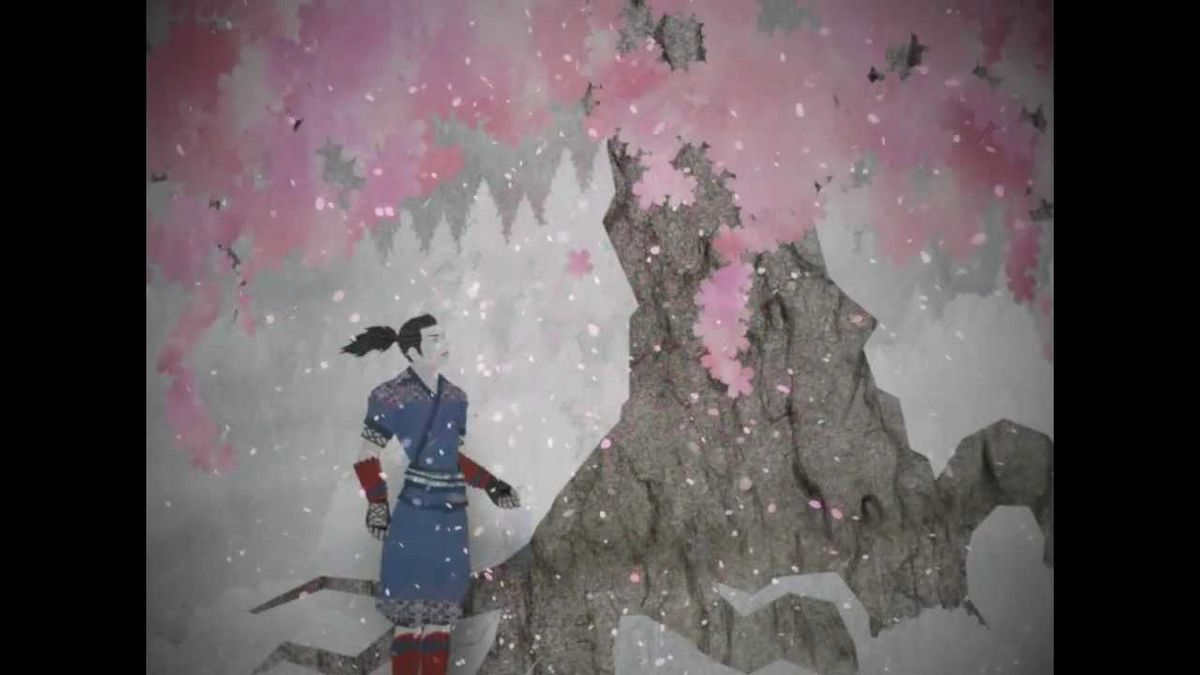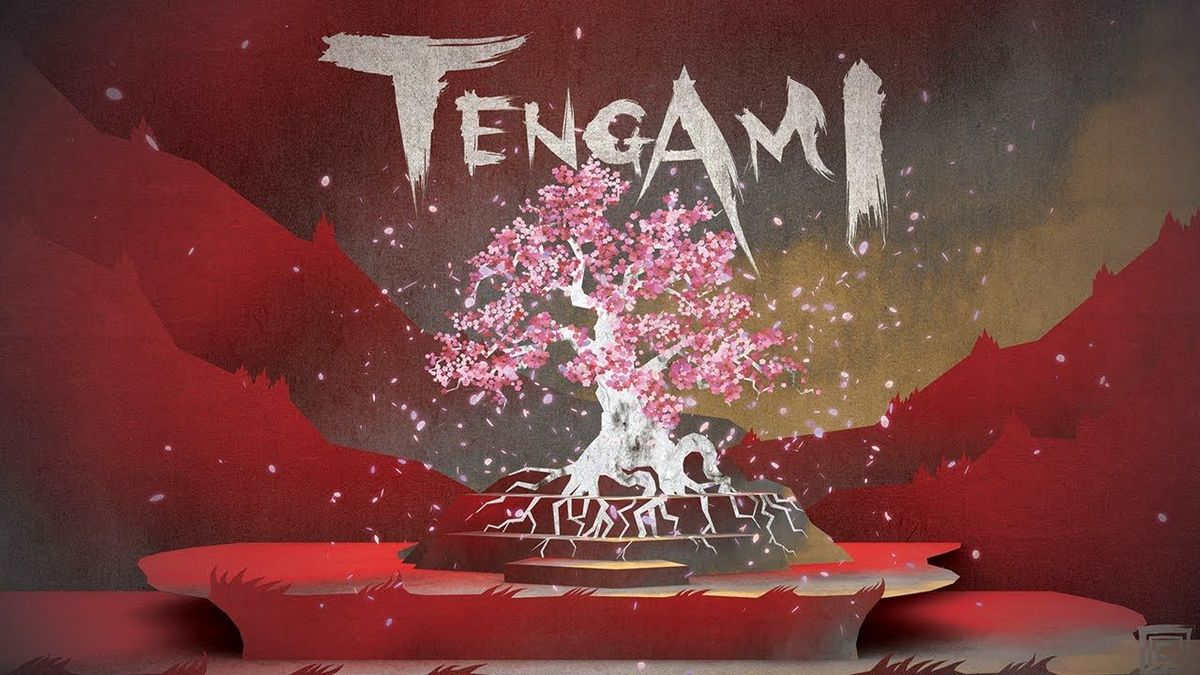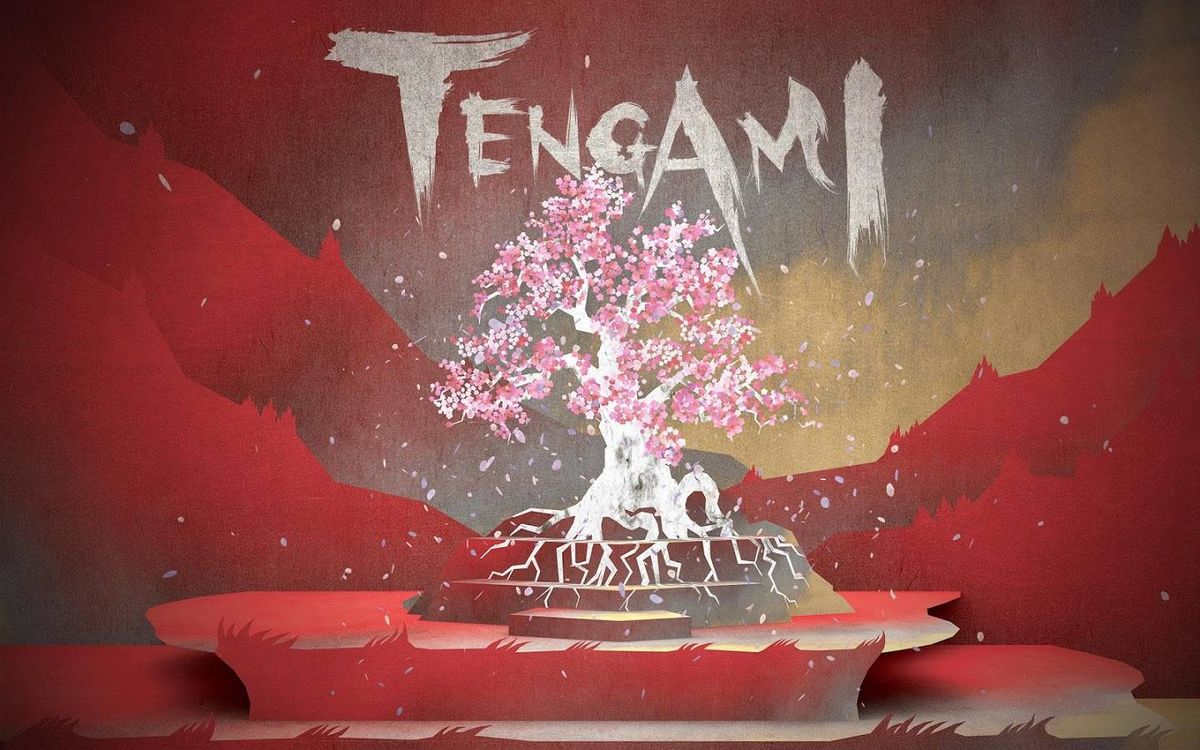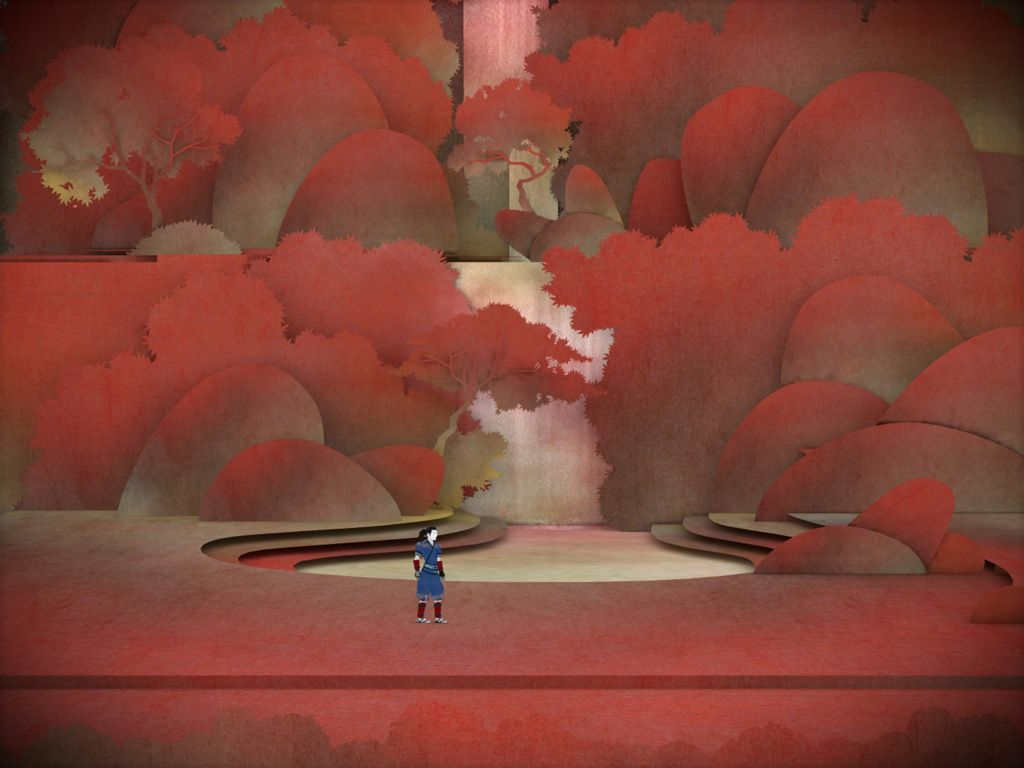
Tengami is a unique and beautifully crafted puzzle game that takes players on a journey through an intricately designed world inspired by traditional Japanese art and culture. Developed by Nyamyam, this visually stunning game combines the elegant simplicity of origami with the immersive experience of interactive storytelling to create a one-of-a-kind gaming adventure. With its innovative gameplay mechanics, striking visuals, and captivating sound design, Tengami offers players a truly unforgettable gaming experience that transcends genre boundaries. In this article, we will explore the various elements that make Tengami such a remarkable achievement in modern video game design. From its breathtaking visuals to its rich cultural references, we will delve into every aspect of this critically acclaimed indie title to uncover why it has become such a beloved classic among gamers worldwide.
- The Art of Tengami: An In-Depth Look at the Game’s Visual Design and Inspirations
- Exploring the Soundtrack of Tengami: A Study of its Musical Themes and their Emotional Impact
- The Mechanics Behind Tengami’s Puzzle Solving: An Analysis of Its Unique Gameplay Elements
- Storytelling in Tengami: How an Ancient Japanese Legend Inspired the Narrative
- Breaking Down the Development Process behind Tengami – Challenges, Discoveries, and Innovations
- Understanding Cultural Significance in Video Games: Why Tengami Celebrates Traditional Japanese Art Forms
- Navigating Through a Paper World – Examining How Control & Navigation Work withinTentgamy’s Environments
- The Future Potential for Interactive Paper-Craft Style Gaming after “Tengamie”
The Art of Tengami: An In-Depth Look at the Game’s Visual Design and Inspirations
Developed by British studio Nyamyam, the game’s visuals are heavily influenced by the concept of “wabi-sabi,” which emphasizes finding beauty in imperfection and simplicity.
The game’s visual design is characterized by its use of paper textures, folding mechanisms, and hand-drawn illustrations. The levels themselves fold out like origami creations, creating a sense of space that feels both natural and surreal. This unique approach opens up new possibilities for gameplay mechanics as well. For example, players must physically fold or manipulate certain objects within each level to progress through the game.
The inspiration for Tengami’s art style comes from Japanese folk tales and nature motifs such as cherry blossoms, bamboo groves, and waterfalls. The team at Nyamyam also drew inspiration from classic Japanese woodblock prints by artists such as Hokusai and Hiroshige.
Overall, Tengami offers an immersive experience unlike any other thanks to its intricate paper-based visuals inspired by centuries-old traditions while innovating with modern technology to create something truly unique in gaming history.
Exploring the Soundtrack of Tengami: A Study of its Musical Themes and their Emotional Impact
The game’s composer, David Wise, has skillfully crafted a score that features traditional Japanese instruments such as the koto, shakuhachi, and taiko drums to bring authenticity and depth to the game’s setting. The music transports players into a serene world filled with cherry blossom trees, tranquil ponds, and ancient shrines.
One of the recurring musical themes in Tengami is the use of melancholic melodies played on solo instruments during moments of introspection or solitude; this creates a strong emotional connection between the player and their avatar. Additionally, during tense moments when danger lurks around every corner or during intense fight sequences against mythical creatures such as dragons or giant spiders – fast-paced percussion beats help build tension while also keeping pace with the action.
In conclusion, exploring Tengami’s soundtrack provides insights into how music can enhance immersion in video games by creating emotional connections with players through combining traditional instrumentation techniques with contemporary production methods. David Wise deserves recognition for his role in crafting a memorable score that successfully captures both Japan’s rich cultural heritage and Western sensibilities.
The Mechanics Behind Tengami’s Puzzle Solving: An Analysis of Its Unique Gameplay Elements
The game’s distinctive aesthetic draws inspiration from Japanese pop-up books and traditional arts that make the gameplay experience immersive and unforgettable.
One of the most striking aspects of Tengami is its use of paper-based puzzles. Players are required to interact with various objects made out of paper to progress through different levels. These puzzles revolve around manipulating layers, manipulating folds, cutting shapes or figuring out combinations that unlock new sections in the world. This mechanic not only adds depth to the gameplay but also aligns perfectly with the game’s overarching theme.
Another critical aspect behind Tengami’s puzzle-solving mechanics is its dedication towards minimalism. Unlike other games where players may have to juggle multiple objectives at once, Tengami provides a singular goal per level that requires deep observation skills and attention-to-detail rather than quick reflexes or brute force solutions.
In conclusion, Tengami stands as an exceptional example for indie video games developers on how they could blend artistic expression with innovative puzzle-solving mechanics successfully. Its use of paper-based puzzles combined with minimalist design approach makes it highly intriguing while keeping gamers engaged throughout their journey through this beautiful world inspired by Japanese culture.
Storytelling in Tengami: How an Ancient Japanese Legend Inspired the Narrative
The narrative of the game follows the story of a lone wanderer who embarks on an exploratory mission to unravel the mysteries surrounding an enchanted world. One of the most notable aspects of Tengami is its captivating storytelling, which draws inspiration from Japanese legends and folklore.
The game’s narrative structure employs various elements drawn from traditional Japanese storytelling techniques such as Haiku poetry, symbolism, imagery, and metaphors. It effectively uses these elements to create a unique and immersive experience that transports players into the magical world of Tengami.
One significant aspect that makes Tengami’s storytelling more immersive is how it integrates with its gameplay mechanics. The player interacts with different objects in ways pertinent to solving puzzles or advancing in-game objectives that illustrate cultural nuances tied to Japan’s rich history and heritage.
Overall, Tengami weaves together themes like nature, spirituality, mythology while creating a unique blend between gameplay mechanics and interactive storytelling techniques inspired by old-world traditions; this element contributes significantly towards making it one-of-a-kind gaming experiences available today!
Breaking Down the Development Process behind Tengami – Challenges, Discoveries, and Innovations
Behind the game’s stunning visuals lies an equally impressive development process that involved overcoming significant challenges while discovering new ways to push the boundaries of interactive gaming.
One of the biggest challenges faced by the developers was designing an intuitive and seamless user interface for navigating Tengami’s intricate paper landscapes. The team had to find innovative solutions for allowing players to interact with objects in different planes, which required careful consideration of camera angles and perspective shifts.

Another key aspect of Tengami’s development process was creating dynamic soundscapes that would immerse players in its lush environments. The developers experimented with various techniques such as binaural audio recording and spatial audio processing to create realistic sounds that would enhance the game’s sensory experience.

At the heart of Tengami’s success were several major innovations, including its use of real-world physics simulations to bring its paper structures to life. Additionally, the team incorporated elements from traditional Japanese storytelling techniques such as haiku poetry into their narrative design, providing depth and meaning beyond mere visual spectacle.
In conclusion, Tengami is more than just a beautiful game – it represents an exceptional achievement in terms of innovation, creativity, and technical expertise. By breaking down barriers between player interaction and story immersion while incorporating cutting-edge technology throughout all aspects of design & engineering processes behind this amazing title set new standards within industry forevermore!
Understanding Cultural Significance in Video Games: Why Tengami Celebrates Traditional Japanese Art Forms
The game uses stunning visuals and soundscapes to create a unique atmosphere that captures the essence of Japan’s natural beauty.
One of the key strengths of Tengami is its ability to immerse players in Japanese folklore and mythology. Through elements such as origami, paper folding, and storytelling techniques reminiscent of Kamishibai (traditional Japanese street theater), Tengami evokes a sense of nostalgia for classic Japanese culture. By doing so, it offers insight into the cultural values held by past generations.
Moreover, Tengami is notable for showcasing how modern technology can be used as a medium for preserving traditional art forms. It seeks to show how video games can contribute towards keeping these ancient traditions alive by presenting them in new ways that appeal to audiences all over the world. As gaming becomes increasingly popular globally, Tengami is setting an example on how developers can incorporate different cultures into their creations while also inspiring gamers worldwide about other cultures’ beauty and diversity.
Navigating Through a Paper World – Examining How Control & Navigation Work withinTentgamy’s Environments
One of the most intriguing aspects of Tengami is how it utilizes innovative control mechanics to navigate this papercraft environment. Players must manipulate the pages of a pop-up book to move through each level, unfolding or folding various elements to create new paths and reveal hidden areas.
Effective navigation in Tengami requires careful observation, planning, and manipulation of the environment around you. This involves not only navigating through 2D space but also traversing between different layers within the 3D pop-up structures that make up each level. The game’s designers have done an excellent job creating a sense of tangibility for these papercraft environments by using realistic physics simulation, subtle sound effects, and fluid animations.
However, while navigation forms an integral part of Tengami’s gameplay experience, it is tightly interconnected with other core systems such as puzzle-solving and exploration. Successful completion requires players to exercise spatial reasoning skills alongside problem-solving abilities – all underpinned by intuitive controls that seamlessly integrate into this fantastical world made out entirely from paper!
The Future Potential for Interactive Paper-Craft Style Gaming after “Tengamie”
The game beautifully blends traditional origami-style visuals with modern technology to create an immersive and engaging experience for players. With its innovative blend of tangible and virtual elements, Tengami has paved the way for future potential in this genre.
One exciting possibility is the expansion into educational gaming applications, where children could learn about history or science through interactive paper-craft models. Additionally, there is room for further exploration of storytelling within this genre. Imagine playing a game where you follow a character through an unfolding storybook adventure that incorporates puzzles and other gameplay elements.
Another area worth exploring would be using these types of games as therapy tools to alleviate stress or anxiety. The tactile nature of paper-craft can have a calming effect on individuals while still keeping them engaged in gameplay mechanics. Overall, Tengami’s success demonstrates that interactive paper-craft style gaming has enormous potential to continue evolving and expanding into new areas beyond entertainment alone.

In conclusion, Tengami is a beautifully crafted game that takes players on an immersive journey through ancient Japan. The expert design and attention to detail in every aspect of the game create a unique experience that will captivate gamers from start to finish. The seamless integration of traditional Japanese art and culture with modern technology makes this game stand out among its competitors.
The gameplay is simple yet engaging, offering challenging puzzles that require players to think outside the box. The use of touch controls adds another layer of immersion and allows players to interact with the world in a natural way.
Furthermore, the soundtrack perfectly complements the visuals and provides an ambient atmosphere that transports players into another time and place. From serene forests to bustling towns, Tengami’s environments are stunningly rendered, making it easy for anyone who plays it become deeply invested in exploring them.
Overall, Tengami is a must-play game for anyone interested in beautiful graphics coupled with well-designed gameplay mechanics. It promises hours upon hours of immersive entertainment as you explore the rich landscapes of ancient Japan while solving intricate puzzles along your journey. This title is sure not only entertain but also educate people about Japanese culture while immersing them into an extraordinary adventure they won’t forget anytime soon!
Read More:- Experience the Magic of Paper Mario – A Fun-Filled Adventure Game! (68 characters).
- Unleash Your Inner Gamer with the Exciting Paper Mario: The Thousand-Year Door Game!.
- Master the Challenge: Puzzle Quest 2 Brings Epic Adventure and Strategy in a Unique Game Experience!.
- Touken Ranbu Warriors: The Ultimate Game for Fans of Japanese Swordsmanship.
- Tearaway: The Ultimate Adventure Game for PS4 – Immerse Yourself in a Magical World!.
- Discover the Thrilling World of Puzzle Pirates: A Fun and Challenging Game!.
- Uncover Mystical Secrets in Game The Forgotten City – A Unique Adventure Experience!.